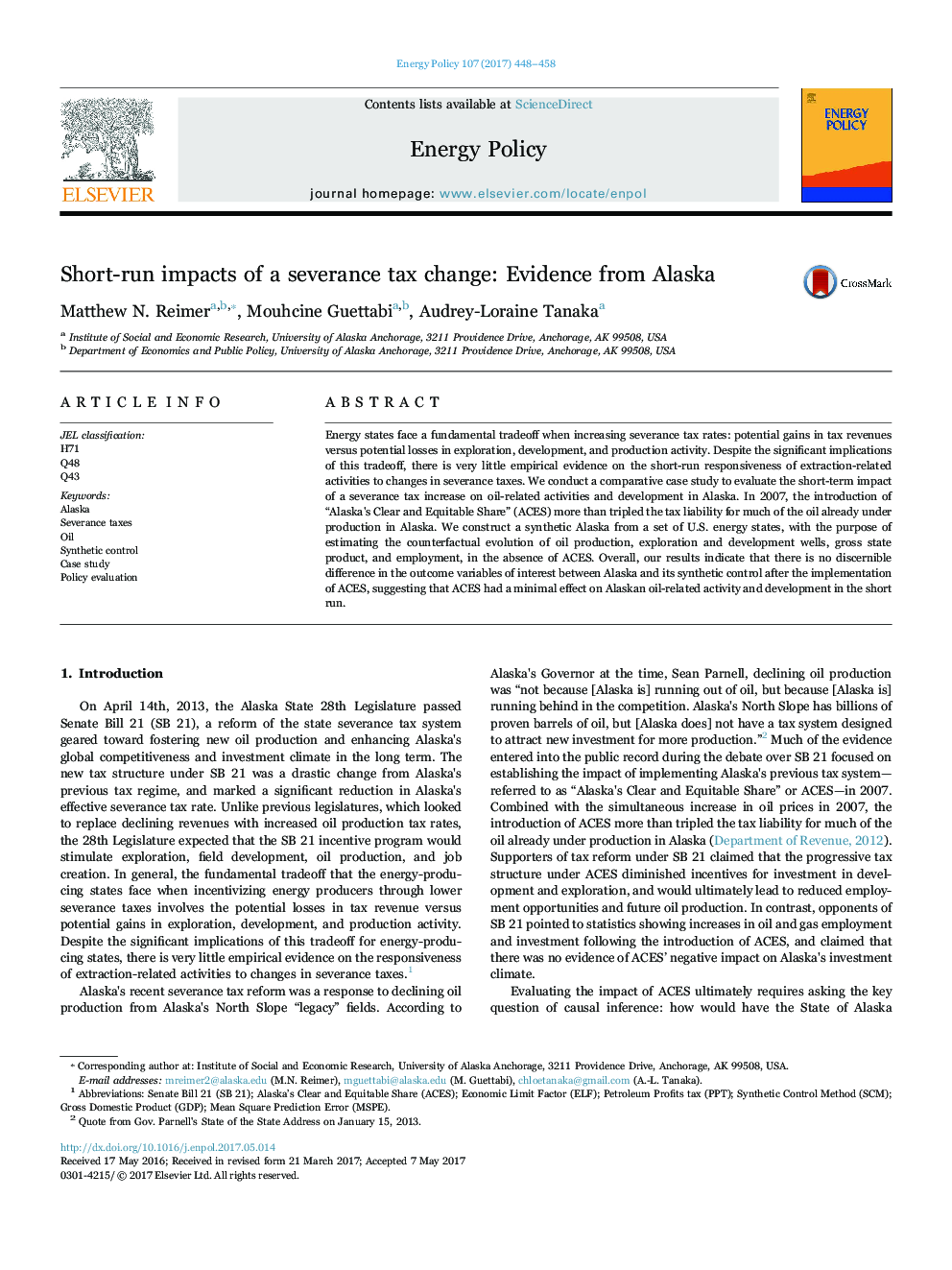| Article ID | Journal | Published Year | Pages | File Type |
|---|---|---|---|---|
| 5106028 | Energy Policy | 2017 | 11 Pages |
Abstract
Energy states face a fundamental tradeoff when increasing severance tax rates: potential gains in tax revenues versus potential losses in exploration, development, and production activity. Despite the significant implications of this tradeoff, there is very little empirical evidence on the short-run responsiveness of extraction-related activities to changes in severance taxes. We conduct a comparative case study to evaluate the short-term impact of a severance tax increase on oil-related activities and development in Alaska. In 2007, the introduction of “Alaska's Clear and Equitable Share” (ACES) more than tripled the tax liability for much of the oil already under production in Alaska. We construct a synthetic Alaska from a set of U.S. energy states, with the purpose of estimating the counterfactual evolution of oil production, exploration and development wells, gross state product, and employment, in the absence of ACES. Overall, our results indicate that there is no discernible difference in the outcome variables of interest between Alaska and its synthetic control after the implementation of ACES, suggesting that ACES had a minimal effect on Alaskan oil-related activity and development in the short run.
Related Topics
Physical Sciences and Engineering
Energy
Energy Engineering and Power Technology
Authors
Matthew N. Reimer, Mouhcine Guettabi, Audrey-Loraine Tanaka,
